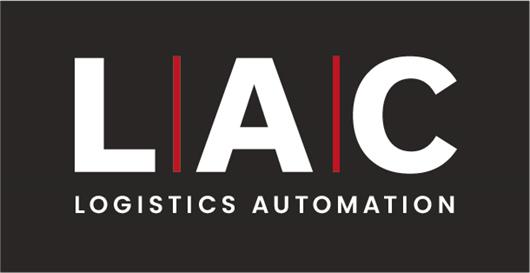 Add My Company
Add My Company

In the fast-paced world of food production, efficiency, safety, and quality are paramount. Food industry conveyor systems play a pivotal role in achieving these goals by enabling seamless logistics automation. Whether it’s transporting delicate produce or handling raw meat and poultry, the design of conveyor systems requires careful consideration of various factors to ensure food safety, operational efficiency, and regulatory compliance.
The Core of Food Industry Conveyor Systems
Food Safety and Hygiene
At the heart of every food industry conveyor system is the commitment to food safety and hygiene. The choice of materials is critical. Utilising food-grade materials that are corrosion-resistant, easy to clean, and non-reactive with food is imperative. The conveyor system’s design should facilitate effortless cleaning, ensuring that every nook and cranny can be reached and sanitised effectively. Regular maintenance and the use of food-safe lubricants are crucial to prevent contamination and ensure the system’s longevity. So you should consider the following in your Food Industry Conveyor system.
Materials
Use food-grade materials that are resistant to corrosion, easy to clean, and non-reactive with food.
Sanitisation
Design for easy and thorough cleaning with minimal disassembly. Minimize flat surfaces and crevices where debris can accumulate.
Lubrication
Choose food-safe lubricants and ensure proper lubrication points to prevent contamination.
Contamination Prevention
The design should incorporate measures to prevent cross-contamination. This involves careful consideration of the layout to segregate raw, cooked, and ready-to-eat foods effectively. Selecting appropriate conveyor belt materials that suit the food type is pivotal in minimising the risk of contamination.
Here are some areas you should think about for Contamination prevention in your conveyor systems
Separation
Design the conveyor layout to keep raw, cooked, and ready-to-eat foods separate to prevent cross-contamination.
Belt Selection
Choose conveyor belts that are appropriate for the food type. Some foods may require specific belt materials to prevent contamination.
Product Integrity
Gentle handling is a paramount consideration. Delicate food products, such as fragile produce or intricate pastries, must traverse the conveyor system without sustaining damage. Proper tracking mechanisms and well-aligned belts are essential to prevent spills and maintain product integrity.
Gentle Handling
Design the conveyor system to minimise impact and damage to delicate food products.
Tracking
Ensure the conveyor belts maintain proper alignment to prevent spills or product damage.
Variable Product Sizes and Shapes
Conveyor systems should accommodate the diverse range of products that flow through them. Adjustable side guides are invaluable in ensuring that different product sizes and shapes can navigate the system smoothly, without jamming or skewing.
Adjustable Guides
Incorporate adjustable side guides to accommodate different product sizes without jamming or skewing.
Capacity and Throughput
Sizing the conveyor system correctly is critical to ensuring optimal throughput. As the cornerstone of logistics automation, the conveyor system must be designed to handle the peak production volumes efficiently. Identifying potential bottlenecks and designing to mitigate them ensures a consistent and efficient flow.
Sizing
Size the conveyor appropriately for the expected throughput, considering peak production times.
Bottlenecks
Identify potential bottlenecks and design to mitigate them to maintain efficient flow.
Environmental Conditions
The environment in which you food production or processing operation is operating in is a crucial consideration for the success of
Temperature
Consider temperature control requirements for both the conveyor system and the food products. Some foods may require cooling or heating during transit.
Humidity
Design to prevent condensation in areas where moisture could be an issue.
Specific Considerations for Different Foodstuffs
Meat and Poultry
For meat and poultry processing, conveyor systems must account for the inherent challenges of handling raw proteins. These systems must facilitate swift movement while adhering to stringent food safety regulations. Stainless steel materials that are easy to clean and sanitise are ideal. Additionally, the conveyor’s design should include mechanisms to catch and remove any drips or residue that might fall during transit.
Ready Meals
Ready meal production demands versatility and efficiency from conveyor systems. The system’s design should cater to a wide range of packaging sizes and materials, accommodating everything from individual servings to family-sized portions. The integration of packaging machines and quality control stations into the conveyor layout is essential for a seamless workflow.
Produce
The delicate nature of fresh produce necessitates a conveyor system that minimises impact and pressure. Gentle handling is paramount to prevent bruising or damaging the items. Conveyor belts with soft surfaces or specialised cushioning can help maintain the quality of fruits and vegetables during transit.
Cereals
Cereal production involves handling various grains, often in bulk. The conveyor system’s design should account for the potential for spills and dust generation. Dust collection mechanisms and proper sealing can prevent cross-contamination between different cereal types. Furthermore, the system should be adjustable to accommodate different grain sizes and textures.
Regulatory Compliance and Future Expansion
Beyond these specific considerations, regulatory compliance is a cornerstone of food industry conveyor system design. Adhering to guidelines set by bodies like the Food Standards Agency ensures that the conveyor system meets the highest standards of food safety.
Food Safety Standards
Ensure the conveyor system complies with relevant food safety regulations, such as those set by the Food Safety Agency (FSA) or other local regulatory bodies.
In the dynamic world of food production, scalability is another critical consideration. The conveyor system should be designed with the future in mind, capable of accommodating increased production volumes or new product lines without substantial modifications.
Conclusion
Food industry conveyor systems are the backbone of logistics automation in food production. The delicate balance between food safety, operational efficiency, and regulatory compliance defines the success of these systems. Whether it’s handling meat and poultry, ready meals, produce, or cereals, the design must align with the unique requirements of each food category. By incorporating these considerations, manufacturers can create conveyor systems that not only streamline production but also ensure the delivery of safe and high-quality food products to consumers around the world. So remember designing effective conveyor systems for the food industry requires careful consideration to ensure food safety, operational efficiency, and regulatory compliance.
At LAC Logistics Automation, our expertise in food automation solutions spans over two decades. Our extensive product portfolio has allowed us to spread our automation technologies and expand our capabilities in developing not only our standard solutions but complete food production lines. Our automation solutions are tailored to your specific environment to ensure we offer the most efficient process and packing system providing enhanced throughput, high accuracy and improved hygiene.
Our in-house capabilities allow us to manage and deliver your conveying or handling requirements to ensure we offer the very best solution that fits your production needs. Our range of hygienic solutions is widely used throughout all sectors of the food industry including meat, poultry, salads, ready meals, and baked foods. Browse through our automation solutions in the food industry today and contact us to discuss your needs further.
For more information on Key Considerations When Designing Food Industry Conveyor Systems talk to L-A-C Logistics Automation

